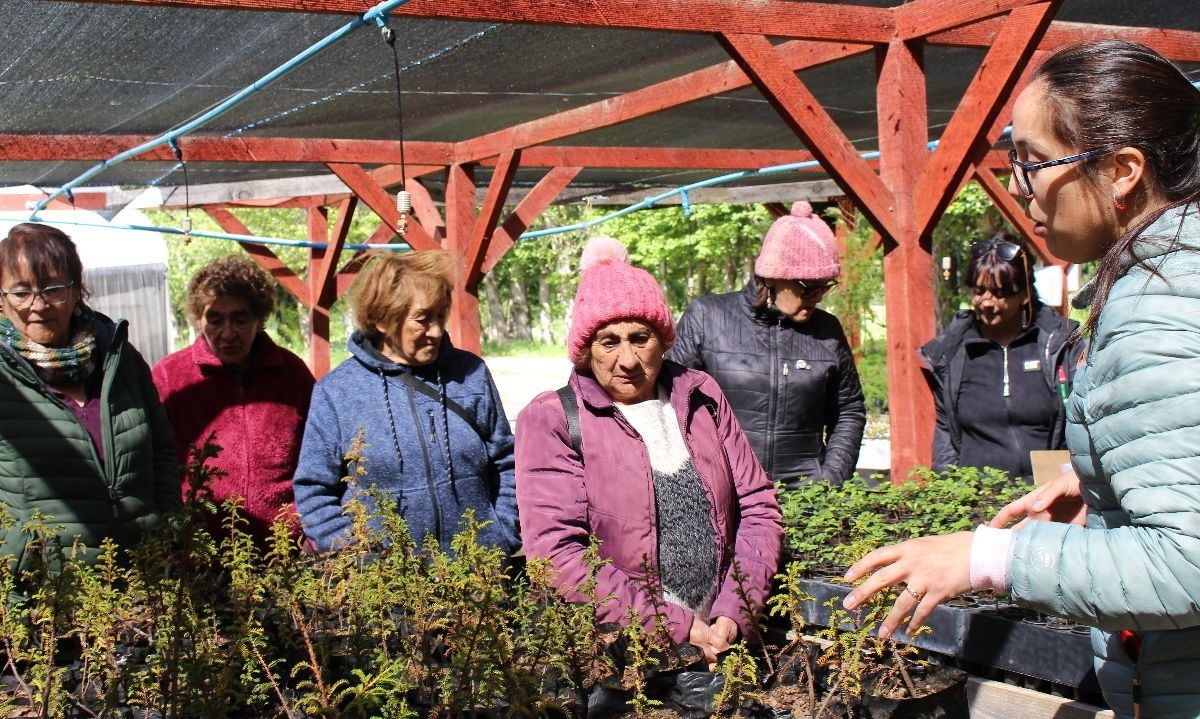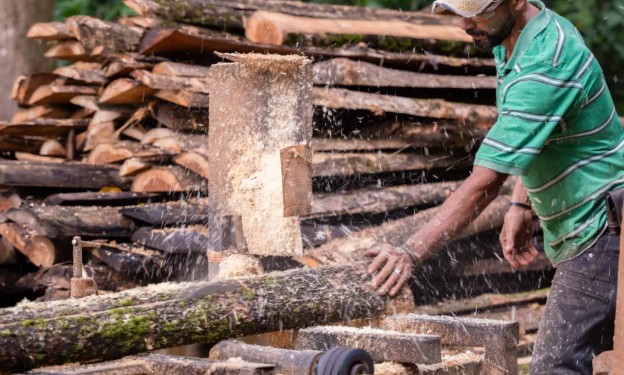The Unexpected Role Forest Plantations Could Play in Capturing CO2
Based on the conclusions of the Carbon Neutrality and Resilience Committee, experts analyze how much and in what way forested territory and the use of wood should increase to counteract carbon dioxide emissions in the ecosystem.
The answer may lie among the trees. Chile is seeking the most effective way to reduce its greenhouse gas (GHG) emissions and achieve carbon neutrality by 2050. To this end, the government has presented a series of recommendations that could set the country on this path.
The 19 members of the Carbon Neutrality and Resilience Committee, from both the public and private sectors, prepared a report with 14 proposals covering water security, resilience, and emission reductions in cities, as well as challenges in energy, low-emission industries, and the forestry-agricultural sector. Some proposals represent new contributions, while others reinforce or deepen existing public policies.
The Unexpected Role Forest Plantations Could Play in Capturing CO2
But one stands out above the rest: increasing forested and other terrestrial and marine vegetation areas in Chile, such as natural forests and plantations, fruit trees, wetlands, and algae.
Regarding the forestry sector, one proposal promotes increased use of wood in construction. This idea stems from the experience of countries like Canada, where wood accounts for over 90% of the construction market, while in Chile it does not exceed 20%.
"Wood is the material of the 21st century because we learned during industrialization that the use of materials like concrete, brick, iron, steel, and other non-renewable resources generates high levels of pollution during their production process," says Rose Marie Garay, an academic at the Faculty of Forestry Sciences at the University of Chile.
Wood, she adds, provides greater environmental benefits when incorporated into construction. This is because it is a renewable material, and "during its production (through cultivation), we capture carbon, and its manufacturing has a lower environmental impact on the planet."
She says there is much work to be done by the industry to reform production processes and avoid fossil fuel use. Garay adds that this adaptation must happen gradually—"it won't happen overnight. The report simply outlines the goals."
However, the professor clarifies that in the case of wood construction, it is not ideal to promote the idea of building exclusively with this material, "because wood alone cannot meet the technical standards required in construction. Wood still needs paint, adhesives, metal connectors, and the foundational structure of the building, which today tends to be a hybrid of concrete and wood," she explains.
She notes that if we look at international benchmarks, producing with concrete emits eight times more than other materials with lower environmental impact. "Wood emits far less than other materials, but we must understand that the entire industry needs to adapt."
The committee's report proposes increasing wood's share in the construction market from the current 18% to 28% by 2030.
However, Ariel Muñoz, a professor at the Catholic University of Valparaíso and a PhD in Forestry Sciences, points out that this measure could bring complications that have not yet been fully considered. "Canada is an exemplary case, but in our situation, forest plantations are often very close to populated areas, which could pose a serious fire hazard," he questions.
The latest report from the United Nations Environment Programme indicates that wildfires are becoming more frequent and intense. For example, over 500,000 hectares of forests burned in 2017 during wildfires in the south-central region of the country, emitting around 68,000 kilotons of CO₂ equivalent. This amount of carbon even exceeded emissions from all land transport, electricity generation, and industries combined that year.
Therefore, the report proposes reducing wildfire-affected areas by one-third by 2030 compared to 2017. Among the actions is incorporating territorial and community-based fire prevention mechanisms into the draft law for the National Forest Service, considering proportionality relative to combustible areas. The proposed implementation start date is 2026.
"Trees are not to blame for fires—there is always a human responsible, and we must address this with effective tools. Through public education, regulations, control, technology, and plantation design," says Fernando Santibáñez, a professor at San Sebastián University and a climate change expert.
The professor from the Faculty of Natural Sciences at USS adds that forest plantations must be designed to prevent fires from burning half a million hectares, as in 2017. "Necessary firebreaks must exist, herbaceous biomass—which spreads fires—must be controlled, and regulations must be stricter regarding the proximity of inhabited areas to forests," he states.
Still, Muñoz argues that areas with forest plantations "tend to be poorer than before monocultures arrived and do not necessarily add value to these locations." Additionally, the PUCV professor notes that forests benefit the environment more when left uncut and that plantations often consume significant water in areas where this resource is not necessarily abundant.
Santibáñez disagrees on this last point. "A pine or eucalyptus forest consumes far less water than vegetables or fruit orchards, which require at least 10,000 cubic meters of irrigation per hectare during summer. In contrast, forests rely on winter rainfall and manage in summer without needing external water," he clarifies.
Forests in Chile
Forested areas cover 23.8% of the national territory, totaling 18,056,618 hectares. Of these, native forests account for 14,739,009 hectares (81.62%), while plantations cover 3,121,969 hectares (17.37%). The expert committee stated that this forested area must increase, though the exact amount needed to meet the proposed goals remains undefined.
"It’s also important to involve native forests in productive use because if we abandon this, they end up being sold as firewood since their owners need economic returns," says Garay regarding the use of native forests for construction. To regulate this, she highlights the Native Forests Law, which ensures protection, recovery, and improvement for sustainable forestry.
Garay adds that due to resource shortages, forests currently lack proper silvicultural management for necessary use. "To sustainably supply the construction industry from native resources, much work remains. However, some forest types, like young oak, raulí, coigüe, and lenga trees, can start contributing. Significant wood volumes exist, but challenges remain, such as certifying and classifying native wood for structural use," the researcher emphasizes.
Garay notes that there is currently little available land for new forests. "We’re not talking about replacing native forests with plantations but rather reforesting lands devastated or eroded by factors like agricultural use."
Garay also expresses hope for stronger state action to drive change, particularly in accelerating voluntary carbon footprint certification for forestry companies. While included in the climate change framework law, she points out that mainly export-oriented companies seek certification, not those supplying domestic demand.
How much should Chile’s forested area grow to meet carbon-neutrality goals? Santibáñez explains that if a growing forest absorbs about 20 tons of CO₂ annually, one hectare captures emissions equivalent to four people. "So, to recapture a quarter of our emissions, we’d need enough forest to offset roughly a quarter of the population’s emissions," he illustrates.
Given that a quarter of Chile’s population is about five million people, this would require one million hectares to reduce emissions by 25%. "The government’s goal of replanting 200,000 hectares in 10 years helps but is five times insufficient," he concludes.
Source:La Tercera

















